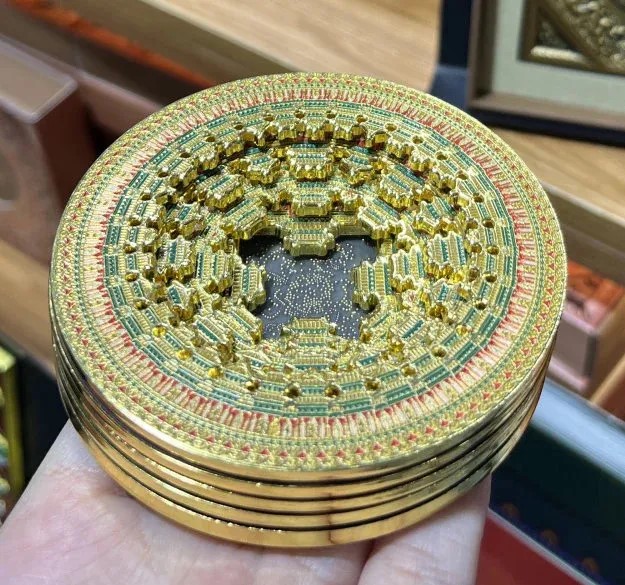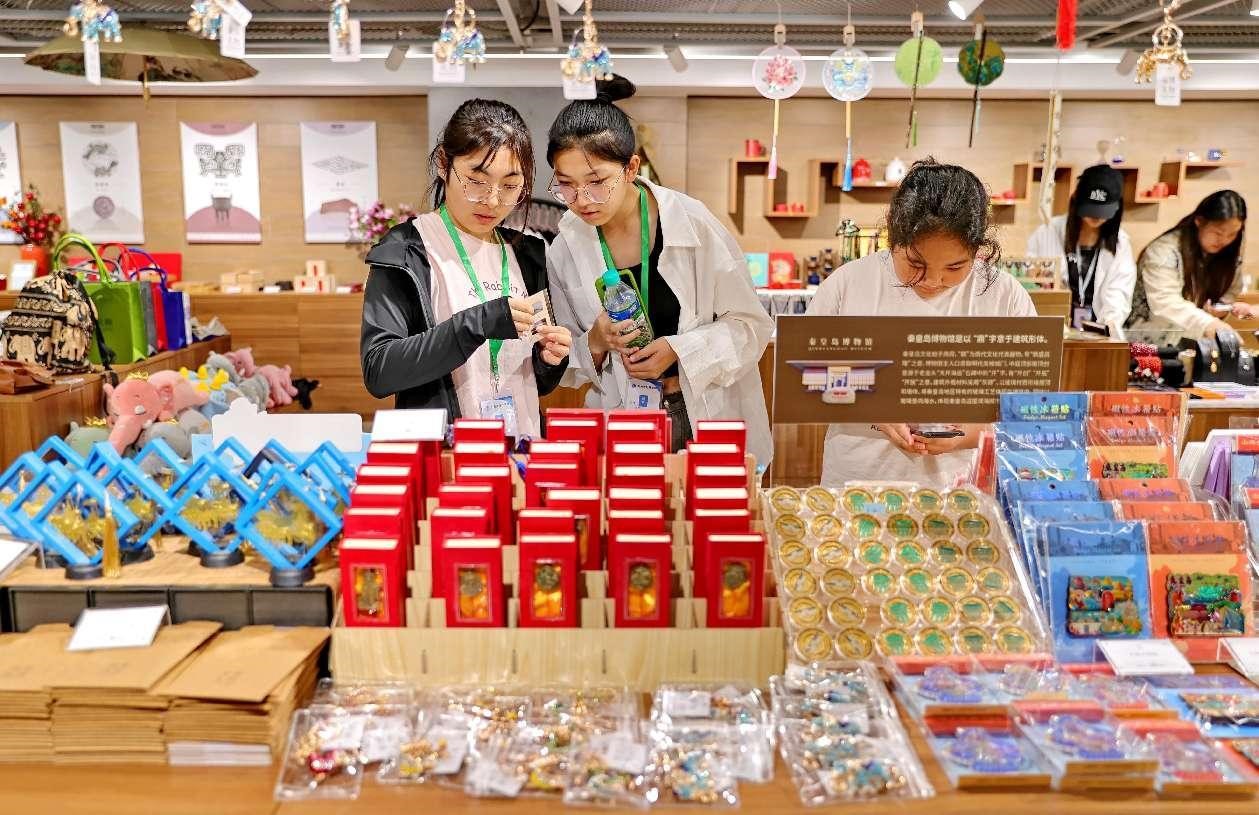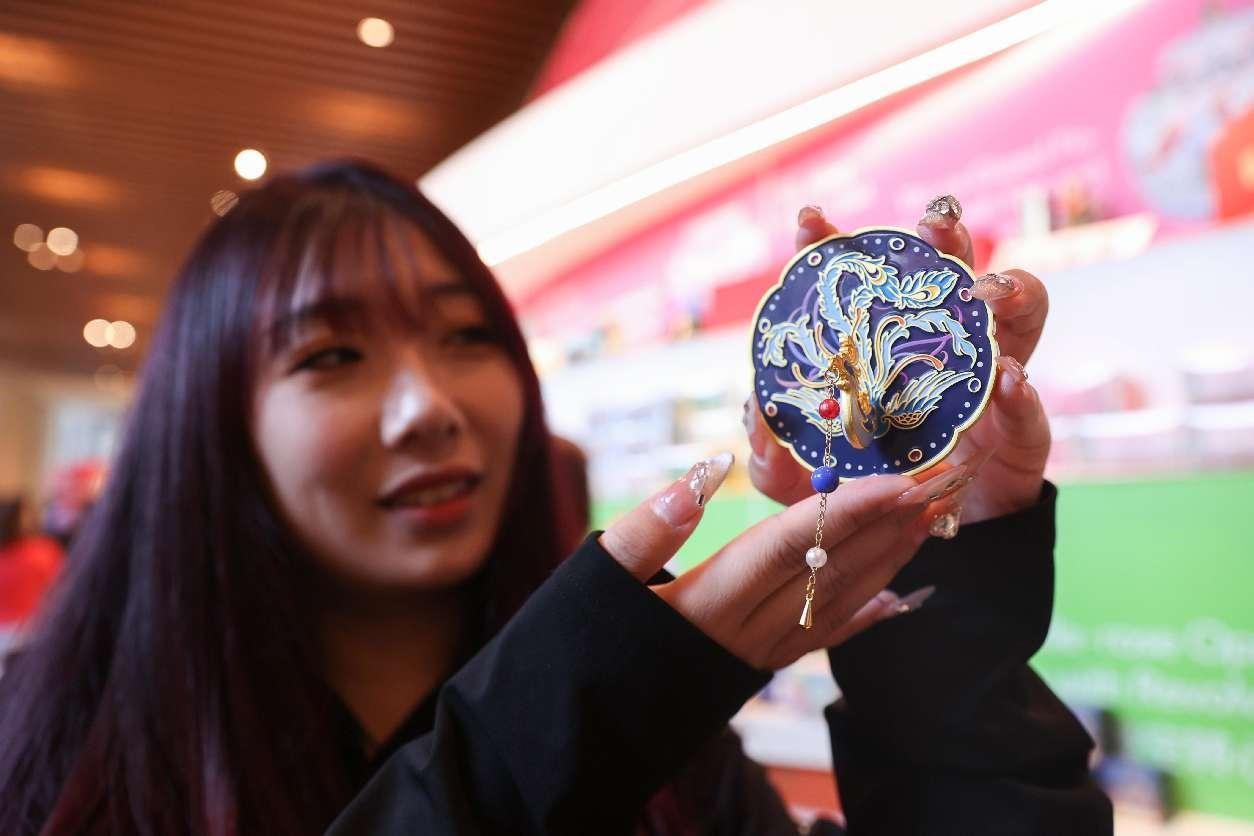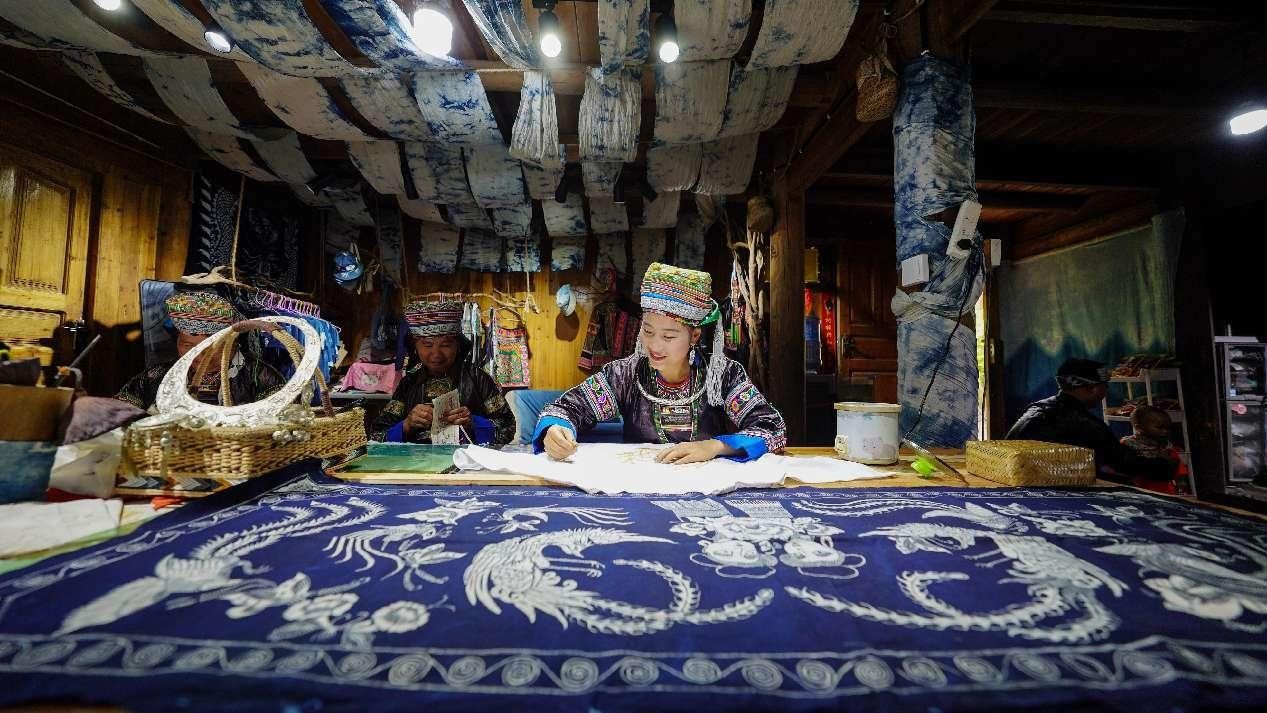Cultural and creative product industry prospers in China
After waiting in line for over two hours, Zhang Jiajia finally bought a refrigerator magnet launched by the Beijing Ancient Architecture Museum, which featured caisson ceiling, a Chinese architectural feature typically found in the ceiling of temples and palaces, usually at the center and directly above the main throne, seat, or religious figure.

Photo shows a refrigerator magnet launched by the Beijing Ancient Architecture Museum, which features caisson ceiling in Beijing's Longfu Temple. (Photo from the official account of the Beijing Ancient Architecture Museum on WeChat)
The refrigerator magnet was inspired by the caisson ceiling in Beijing's Longfu Temple, which is now collected by the Beijing Ancient Architecture Museum. It has five layers that can be either separated or put together. The refrigerator magnet became the top trending product soon after it hit the market in May this year, and is often out of stock.
Zhang, a culture aficionado, visits museums a couple of times every month, either for exhibitions or to buy cultural and creative products.
"Refrigerator magnets are exquisite. They serve as ornaments and are rich in culture. To some extent, buying them is like taking culture home," Zhang said.
In recent years, cultural and creative products represented by refrigerator magnets have been emerging. These products are not only rich in culture but also fashionable. The rapid growth of related industries is effectively boosting the development of local cultural and tourism sector.

Tourists shop cultural and creative products at the Qinhuangdao Museum in north China's Hebei province. (People's Daily Online/Cao Jianxiong)
Why have seemingly insignificant refrigerator magnets become highly sought-after products?
Hao Chunfeng, general manager of a Beijing-based cultural company, a member organization of the National Alliance of Cultural Creative Museum Products, said that limitations such as the number of museums, available spaces, and people's leisure time prevent many from visiting museums frequently. Additionally, the rarity and uniqueness of cultural relics have contributed to the rise of cultural and creative products inspired by these relics.
Cultural and creative products are no longer limited to museums - in recent years, "high recognizability" has increasingly become the design standard for cultural and creative products across different regions.
Multiple distinctive products launched by north China's Shanxi province are popular among tourists. These include a small temple-shaped refrigerator magnet inspired by the Jin Temple, translucent postcards depicting the Nine Dragon Screen in Shanxi's Datong, ice cream in the shape of the Twin Pagodas in Taiyuan, capital of Shanxi, and mortise-and-tenon structure models.

A woman showcases a cultural relic-inspired make-up mirror she has purchased at the National Museum of China. (People's Daily Online/Chen Xiaogen)
With its rich cultural and historical resources, Shanxi has long prioritized finding effective ways to promote and showcase its heritage. Today, these cultural and creative products, designed to resonate with young audiences, are gaining market recognition and opening new doors for the province's cultural tourism efforts.
A gift shop on the Zhonglou Street, also known as Bell Tower Street in Taiyuan sells approximately 2,000 types of Shanxi-themed cultural and creative products. Last year, it achieved sales of nearly 5.9 million yuan ($814,557), and this year, the number is expected to reach around 8 million yuan.
High-quality cultural and creative products, apart from making impressive sales, are also emerging as a key driver of local economic and social development.
In Huawu village, Xinren Miao township, Qianxi, Bijie, southwest China's Guizhou province, tourists were browsing for their favorite cultural products in a Miao embroidery workshop. According to the workshop's manager, the workshop blends tradition with fashion, creating items like cushions, keychains, and T-shirts that cater to consumer preferences. This approach not only enhances the economic value of Miao embroidery but also injects fresh vitality into the local cultural and tourism sector.

In recent years, Rongjiang county in Qiandongnan Miao and Dong autonomous prefecture of Guizhou province has transformed traditional crafts like batik and embroidery into sought-after fashion items by combining intangible cultural heritage with creative design. Photo shows local Miao women making batik products. (People's Daily Online/Zhou Guangsheng)
Weifang in east China's Shandong province, known for its rich history of kite-making, has made kites a central theme for cultural products. In venues like the Weifang World Kite Museum's creative workshop, kite-themed products such as kite wind chimes, kite-themed table decorations, and embroidered kite sachets are drawing significant interest from tourists. Currently, Weifang is home to over 600 kite-related businesses, which generate an annual revenue of more than 2 billion yuan and export products to over 50 countries and regions worldwide.
Photos
Related Stories
- Museums' creative cultural products gain popularity in China
- New site of Natural History Museum of China to open in 2029
- Site museum showcasing Chinese civilization 4,000 years ago opens
- Museum's phoenix crown fridge magnet becomes unexpected cultural sensation
- Museums win over Chinese youth with cute, collectible merchandise
Copyright © 2024 People's Daily Online. All Rights Reserved.









